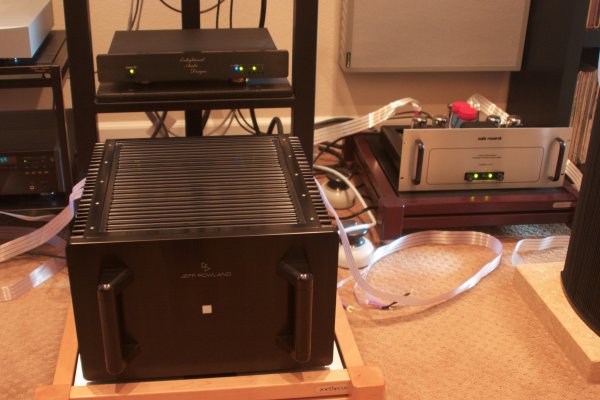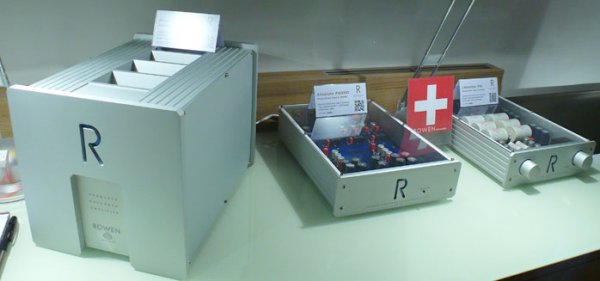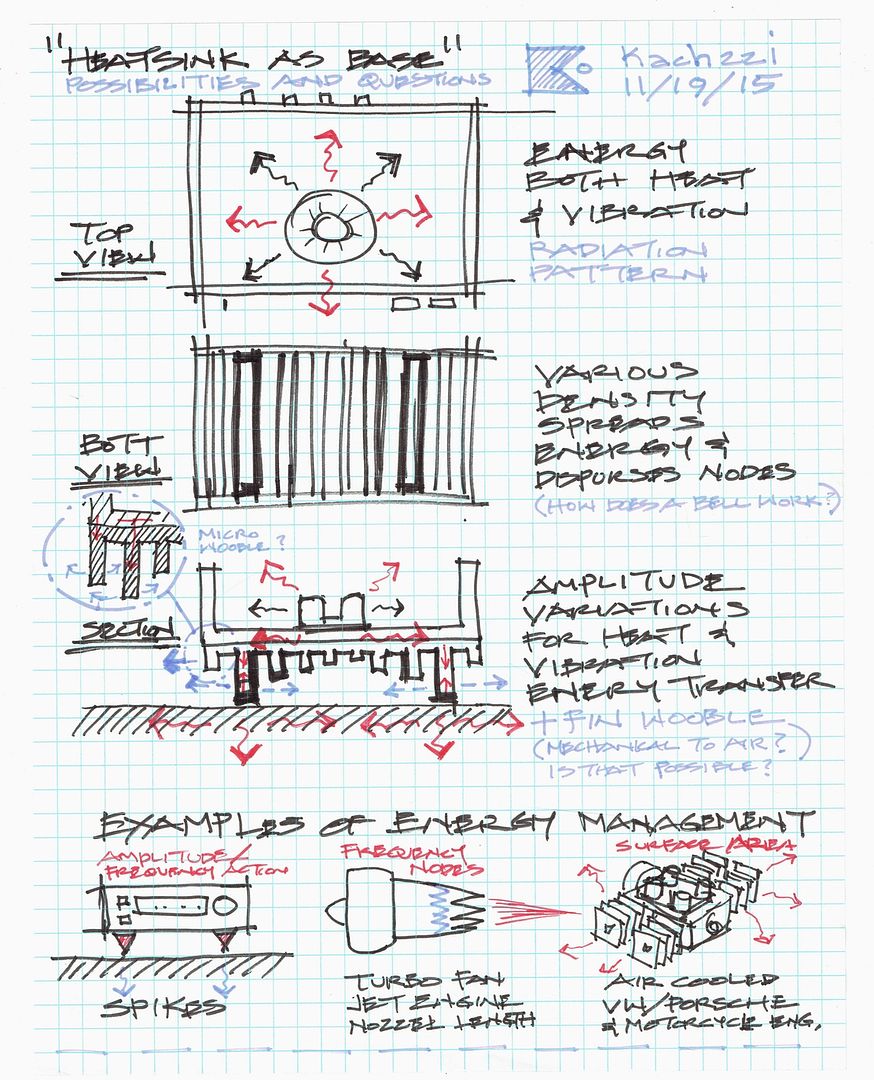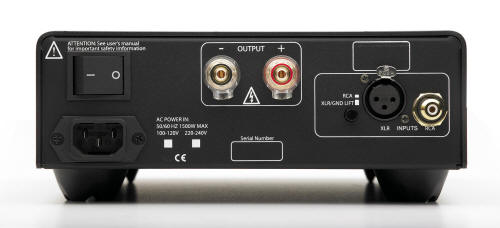From the horses mouth, an email from Ian Robinson, touching on the amplifier design:
"The questioning as to why not have the fins on the sides or the back:
Agreed, fins dissipate heat most efficiently when they are vertically orientated. But when you factor in the sheer size (as in surface area) of this heat sink, it then doesn't need such a lot of air flow to keep it cool. And the openness of the "sine" curve allows a generous clearance for air to convect through and up from the heat sink. In fact, with one of those "through" directions always being forward, this creates a real positive for dissipation when units are positioned in cabinets.
So, as the flat "back"/top surface of the heat sink then becomes the base of the amplifier, even driving low impedance loads long and hard means the metal never gets warmer than blood temperature. This is the case because the area of the heat sink is "overkill" to the nth degree, the amp doesn't raise a sweat with the more difficult loads. This was the only technical test it needed to deliver on, so we knew after long, hard sessions it had passed with flying colours! Along with being rock solid as a heat sink!
As implied, the initial impetus for this design was to meet the changing market urging the use of drivers with ever lower impedances. So that there was plenty of heat sinking to "future proof your system", it seemed only logical to re-design our bigger ENR versions (prior to the Black Series) to use a heat sink as the whole base plate of the amplifier.
REDGUMs are designed so that all circuits are efficient and that must include heat issues!! In fact, the very first REDGUM design had all MOSFETs mounted directly onto a thick metal plate bolted to the internal heat sink. (Within a few years, all MOSFETs were mounted directly onto that internal heat sink.) Then with the advent of the SignWave heat sink, an even more effective connection could be made as the MOSFETs of all Signature Series models were close coupled to the top/"back" of this immense surface. Also for the first time (in the industry?) we could use this heat sink to cool the mains transformer. And as to the rigid mounting of the transformer, it, too, is bolted directly to the casting.
Unsurprisingly, the heat dissipation is very effective on this "BBQ grill" (as it has been called!). As you would be only too aware, some Audio brands have heat sinks visually well placed, but actually with no heat-generating components mounted onto them directly!!!!!! I find that technically weird as naturally it is most ineffective. : (
Indeed, we have tried placing heat sinks where they are "meant to be"! Prior to this, we had interim models using heat sinks at the rear, or completely forming the sides of the amplifier (e.g. earlier models of our 6 channel Home Theatre power amp), but in comparison, that side coverage was only about two-thirds of the surface area the Sign Wave heat sink offers as a base.
I am sure the thought has crossed your mind that for the power of this "baby" Black Series amp you are testing, the amount of heat sinking is excessive. ; ) Indeed, yes, but, on the other hand, it really does come in handy for the rest of the Black Series ramping up to 244W/ch and 500W/ch into 2?. So it was decided when presenting a new series it made more sense to have one physical style.
For the last 10 years, the SignWave heat sink has been the visual hallmark of our larger ENR models in what is now called the Amplifolia range. As the Black Signature Series are clones of the Amplifolia designs, then having the same heat sink seemed to fit the visual logic. As the Black Series were focussing on providing the grunt for those more difficult loads, it made even more sense for the technical logic. "























